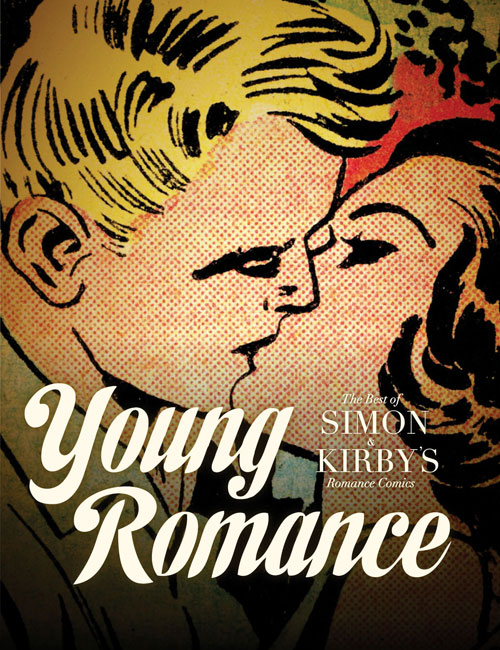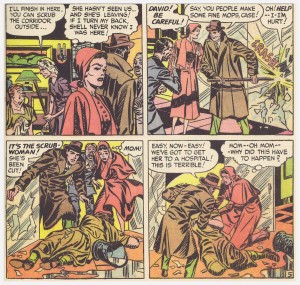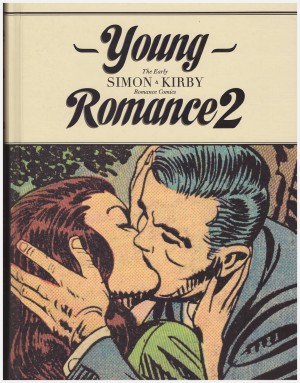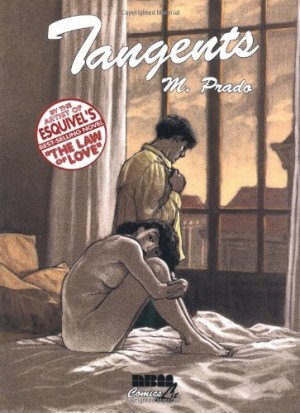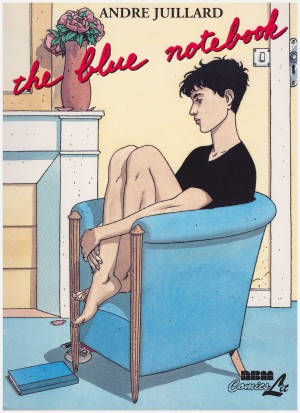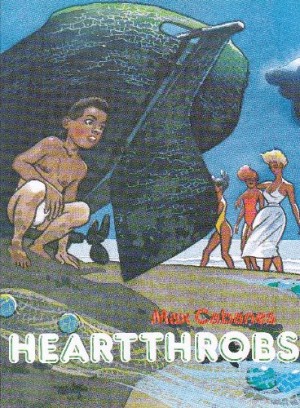Review by Frank Plowright
As they’d already done by creating the patriotic superhero in Captain America, Joe Simon and Jack Kirby were innovators again in 1947 when they introduced the widely imitated Romance comic. Their first person confessionals were an instant hit.
It might not seem that Kirby’s all-action art style, even his less chunky 1940s cinematic approach, was particularly suited to the genre, but he’s surprisingly adaptable, delivering largely reality based art. The only break from this discipline reprinted here is a fantasy sequence when a smitten girl imagines her love as a Viking seaman.
At its best the content is taut melodrama. Fred Adams selling his small town store to his nephew Dan induces great resentment among the ranching community, concerning this city boy and his fancy ways taking advantage of his Uncle. The hypocrisy of Fred going bust through low prices and extending credit he can’t afford eludes the townsfolk. Kathy Remington is particularly proud and stubborn, maintaining her opposition long after the remaining locals have come to terms with having to pay on purchase. This is a romance story, so there’ll only be one ending, but that’s dealt with in the final two panels, and the remainder drags the reader along despite the inevitability.
That tale only has Kirby touching up the art, but authoritative credits are absent, and scholars continue to debate the contributions of both Simon and Kirby from this period when they operated a studio, with Kirby’s the house style. Almost all pencilled artwork is by Kirby, but at least three different inkers can be identified. The most frequent is Simon, but his definitive contribution to the creative end of the partnership has always proved elusive.
In his autobiography The Comic Book Makers Simon claims he and Kirby couldn’t locate a single female scriptwriter able to satisfy the demands of producing romance stories in comics form. It seems rather disingenuous, yet the success of Young Romance tells its own story. It might have been entirely written by men, but the ingredients were combined with enough sensitivity to ensure appeal for women, however outdated the attitudes might appear today. The only credit for writing is a single story from Jack Oleck, who certainly wrote many others for the Simon and Kirby studio in the 1950s as he was Simon’s brother-in-law.
The book is split into material produced before the restrictive Comics Code, and after. To modern eyes what was considered pushing boundaries of good taste in the early 1950s is barely distinguishable in tone from the latter material. There is however, a more formulaic approach to the plotting of anything dating from 1956 onward. In isolation this content would be unremarkable.
The remaining tales, though, aren’t timepieces. Dress the casts in modern clothing, and many plots are strong enough to sustain the 21st century reader. They remain unpredictable, with the easy option rejected on several occasions, supplanted by something better. The invalided former boyfriend doesn’t die on the operating table, for instance, but recovers only to reveal his attitudes are as crippled as his legs formerly were.
Michel Gagné should be congratulated on curating this labour of love. He not only accumulated now exceedingly rare material, but restored the artwork from often extremely tatty sources to enable a presentation consistent with expected standards of publication. Encouragingly, in the manner of the comic’s original success, this book sold well enough to merit a sequel, and that looks even better.
